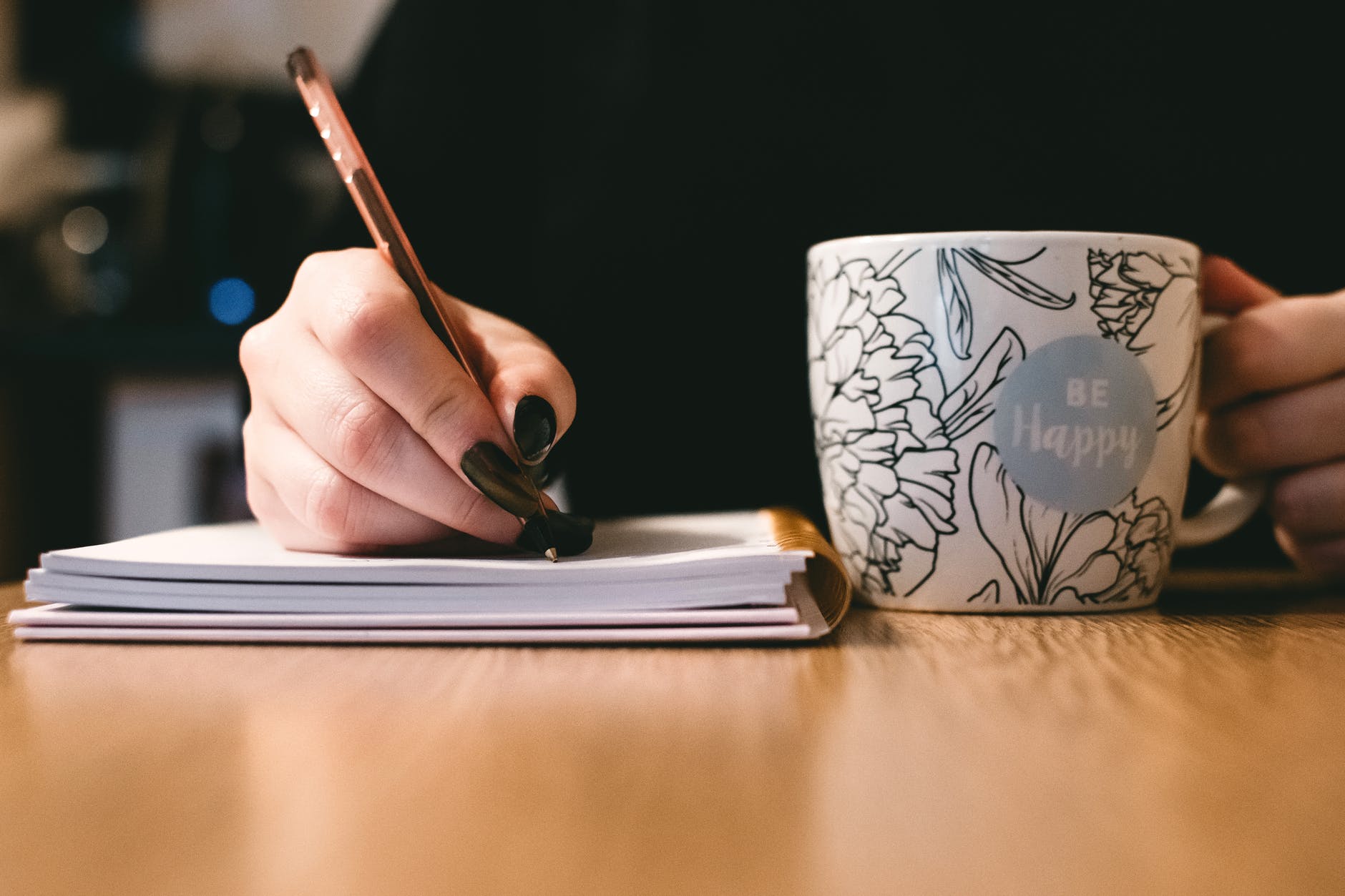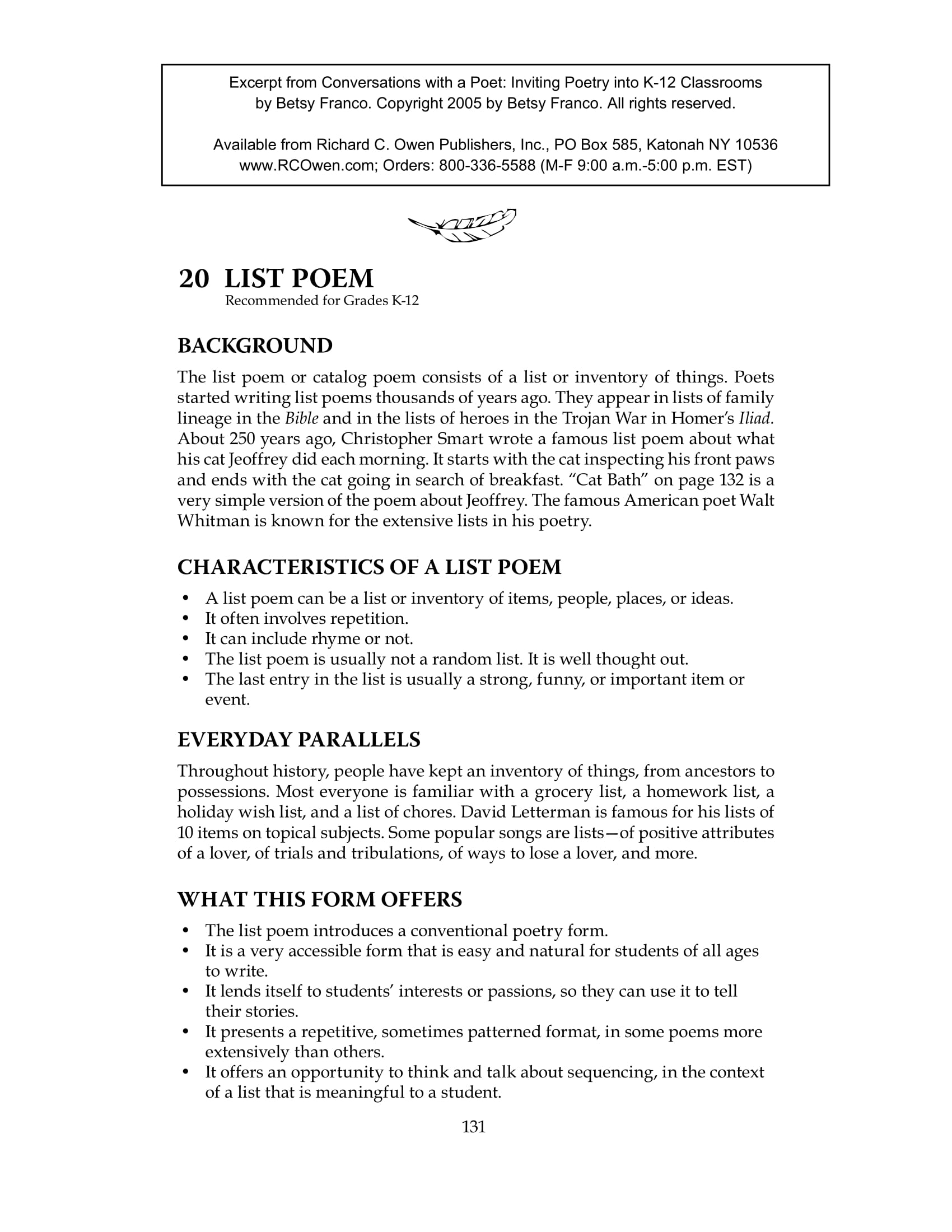7+ Poetry Writing Tips
Poetry is a form of art that predates literacy. It is often closely related to musical tradition as it was believed that the first form of poetry was recited or sung. The earliest poetry existed in forms of hymns and chants. In this sense, poetry is a verbal art recorded from the ancient world in the forms of prayers or stories about religious subject matter, but they also include historical accounts, instructions for everyday activities, love songs and fiction. It was done in such way to help remember oral history, genealogy, and law. You may also see free writings.
Poetry which is derived from the Greek term poieo meaning “I create”, is a form of literature that uses language and its aesthetic qualities to evoke meanings in addition to, or in place of, its supposedly standard meaning. It evokes imagery and emotion through the play or words. It also arouses imaginative awareness of an experience or a specific emotional response through the use of language, how its arranged to derive a different meaning, sound and rhythm. You may also like application writings.

Perhaps the most distinct quality of poetry is its resistance to be defined, labeled or specified. It can mean differently to different people. The English Romantic poet William Wordsworth defined poetry as “the spontaneous overflow of powerful feelings”. According to T.S. Eliot meanwhile, “Poetry is not a turning loose of emotion, but an escape from emotion; it is not the expression of personality, but an escape from personality. But, of course, only those who have personality and emotions know what it means to want to escape from these things.”
Poetry is in fact one of the most contradicting forms of literature– it is complicated yet simple, expressive but can sometimes be passive, and it can be comforting and at the same time daunting. It is an expression of the diversity of expressions and emotions translated into a piece of writing. You may also check out formal writings.
Despite its contradicting nature, poetry is most importantly awe-inspiring. The way poets dole out words in every page is not only practical but critical. They carefully examine words for its emotive quality, musical value, and even its spatial relationship to the page. Through the meticulous choosing and great play of words, it is able to express underlying messages and over-arching purpose that is beyond the literal meaning of words.You may also see essay writings.
Poetry is in fact, evocative. It aims to elicit intense emotions from readers or listeners– from joy, sorrow, anger, catharsis, love and so much more. Not only does it want to sway the emotions but also wants the audience to go through a wide range of experiences like revelation, insight, further understanding of elemental truth and beauty. You may also like minutes writings.
Elements of Poetry
Let us clearly define and discuss the basic elements of poetry:
1. Alliteration
It is the repetition of mostly initial consonant sounds in one or two neighboring words or syllables. It is more focused on the sounds of the letters rather than the spelling. For example, common tongue twisters use alliteration like “Peter Piper picked a peck of pickled peppers.” Another alliteration would be, “kick” and “cake”, but the words “cake” and “city” cannot be considered as an alliteration. Based on the given examples, it is apparent that alliterations focus on the sound of the first consonant letters rather than its spelling and rhyming. You may also check out informative writings.
2. Assonance
If alliteration is the repetition of the initial consonant sound, assonance is the repetition of the internal vowel sounds within a sentence or a line. It is used to emphasize the meaning of words or to set the mood. Just like alliteration, assonance is also commonly used in tongue twisters. For example,”Hear the mellow wedding bells” by Edgar Allan Poe, and “Strips of tinfoil winking like people” Sylvia Plath.You may also see application writings.
3. Figurative Language
Figurative language is commonly used in poetry to substitute the literal meaning words into something else. It is a play of words and is used as the color that intensifies the piece. Two types of figurative language is simile and metaphor.
Simile is a comparison between one thing to another thing of a different kind using the words like or as. It is used to make a description more vivid and/or empathetic. For example, “As big as an elephant”, “He is as strong as an ox”, and “She was as brave as a lion”. On the other hand, metaphor is a comparison between very different things minus the words like or as. It is the application of a word or phrase to an object or action that is not literally applicable. For example, “The snow is a white blanket”, “Her lovely voice was music to his ears”, and “His words were cotton candy”. You may also like script writings.
A common type of metaphor used in poetry is synecdoche. It is using a part of something to signify the whole or vice versa. For instance, “bread” is used to represent food in general and/or money such as in “breadwinner”, and “the world is unfair” in which “the world” is commonly used to signify just a part of it that has happened to an individual. In addition, metonymy is a type of metaphor that uses another word to stand for another. For example, using “silver screen” to substitute for a motion picture, or “the crown” to symbolize a king’s power. You may also check out summary writings.
4. Imagery
It is the concrete representation of the sense of impression, feeling or idea that we want to convey to the audience. Imagery uses language to represent actions, objects, ideas in way that invokes our emotions and physical senses. Images may be visual (something seen), aural (something heard), tactile (something felt), olfactory (something smelt), or gustatory (something tasted). It aims to add depth to a literary piece through vivid and descriptive language.
5. Rhyme
Rhyme or rhyming is the repetition of ending syllables in different words that sound identical or similar. It is more focused on the the words sounding similar rather than the spelling, and is commonly used in the end on every line. It also adds a smooth transition into the next line of the poem. You may also see abstract writings.
Common examples of syllabic rhymes include: bottle and fiddle, cleaver and silver, and pitter and patter. Meanwhile, some examples of imperfect rhymes include: wing and caring, sit and perfect, and reflect and subject.
6. Rhythm
This term refers to the repetition of stressed and unstressed sound in poetry. It is how each word flows from one line to another. It is created by repeating words, phrases or even whole lines. It strongly expresses the meaning the writer intends to convey and the feeling the writer wants the audience to feel. A strong pause within a line of poetry that adds to the rhythm of the entire line is called a caesura.You may also like persuasive writing
7. Stanza
It is a grouped set of lines usually indicated with a blank line or an indention. Stanzas usually have a rhyme, however using metrical schemes is not strictly required.
8. Tone
Tone implies to the attitude the writer has when writing about the poem’s subject and/or the audiences’ feelings towards the subject. It is based on the details on how the poem is conveyed through its words, rhymes and rhythm (or lack of them). It is strengthened with the use of imagery, figurative language, order of words, phrases, and sentences. You may also check out reflective writings

Types of Poetry
There are many types of poetry based on format, rhyme scheme and subject matter. Here is a list of a few types of poetry and an example for each type:
- Allegory (Time, Real and Imaginary by Samuel Taylor Coleridge)
- Ballad (As You Came from the Holy Land by Sir Walter Raleigh)
- Blank verse (The Princess by Alfred, Lord Tennyson)
- Burlesque (Hudibras by Samuel Butler)
- Cacophony (The Bridge by Hart Crane)
- Canzone (A Lady Asks Me by Guido Cavalcanti)
- Conceit (The Flea by John Donne)
- Dactyl (The Lost Leader by Robert Browning)
- Elegy (Elegy Written in a Country Courtyard by Thomas Gray)
- Epic (The Odyssey by Homer)
- Epitaph (An Epitaph by Walter de la Mare)
- Free verse (The Waste-Land by TS Eliot)
- Haiku (How Many Gallons by Issa)
- Imagery (In a Station of the Metro by Ezra Pound)
- Limerick (There Was a Young Lady of Dorking by Edward Lear)
- Lyric (When I Have Fears by John Keats)
- Name (Nicky by Marie Hughes)
- Narrative (The Raven by Edgar Allen Poe)
- Ode (Ode to a Nightingale by Percy Bysshe Shelley)
- Pastoral (To a Mouse by Robert Burns)
- Petrarchan sonnet (London, 1802 by William Wordsworth)
- Quatrain (The Tyger by William Blake)
- Refrain (Troy Town by Dante Rosetti)
- Senryu (Hide and Seek by Shuji Terayama)
- Shakespearean sonnet (Sonnet 116 by Shakespeare)
- Sonnet (Leda and the Swan by William Butler Yeats)
- Tanka (A Photo by Alexis Rotella)
- Terza rima (Acquainted with the Night by Robert Frost)
Poem Excerpt Example
Tips on How to Write a Poem
1. Know your goal
Why are you writing a poem and what do you aim to achieve after writing it? Answer those questions, then you can conform why you are writing the poem in the first place. You may also see writing examples in doc
2. Pick a subject
Poems can be written about anything. Find a subject that sparks your creativity. It is better to determine and fully understand the subject of your poem before even starting as this can help you with the details that should and should’t be included in your piece. You may also like informative writing examples & samples
3. Choose a pattern
You can choose to use a free verse, follow a haiku pattern, use rhyming couplets, etc. Use any pattern that fits your writing style, with the pattern you choose serving as a guide when you will be finally writing your piece.
4. Avoid clichés
Clichés are overused sayings or expressions that everybody is tired of hearing or reading. It is unappetizing and can easily lose the interest of your audience. Although the goal of these sayings are to provide vividness and depth, but because they are so familiar and overused, they have become dull and unpleasant to listen to. You may also check out reflective writing examples & samples
5. Avoid sentimentality
Sentimentality detracts the literary quality of the piece. The tendency is that when you express hyper sentimental emotions, your audience will rebel against your effort to elicit the emotional response. According to Minot, “When readers have the feeling that emotions like rage or indignation have been pushed artificially for their own sake, they will not take the poem seriously”. You may also see examples of alliteration in poetry
6. Use images
Poems, in order to be effective must stimulate the six senses. In order to do so, you must paint a picture through your words. Be creative and use your imagination to let your audience feel the full experience of your poem.
7. Use metaphor and simile
To bring imagery and to help paint a vivid image of your piece, use similes and metaphors. These will help you convey your message artistically but still very much understandable. You may also like abstract writing examples & samples
8. Use concrete words instead of abstract words
Using abstract words can simply be misunderstood or can simply fly over the audiences’ heads since it doesn’t not stimulate their senses. Abstract words can also mean differently to different people and your literacy piece may not be well-received because of it. You may also check out argumentative writing examples & samples
9. Subvert the ordinary
As a poet, you have to see a new light or new perspective in the ordinary. You have to be able to understand the depth you want to express in your poem in order to come up with a new perception. You may also see descriptive writing examples & samples
10. Revise, revise, revise
As always, reread and revise your poem. It is normal to go through several drafts before confidently saying your poem is complete and done. You may also check out obituary writing examples & samples

Poetry is an intricate and delicate form of art. A poet is like painter who paints images using words as pigment, the pen as the brush, and the paper as the canvas. It expresses deep emotions with such soft words, and can convey subtle emotions through heavy-hitting phrases. You may also see writing examples in pdf
This form of art is seeing the uniqueness in the ordinary and convincing the audience that it is really like so. Poetry evokes, stimulates and taps the depths of one’s emotions. What’s really amazing about all of it is that it can do all these with just the power of words and the command of the language. You may also like book writing examples & samples
We hope we were able to help you in your journey to writing a poem of your own.



